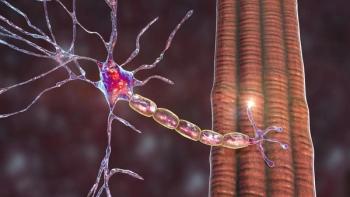
Potential Upcoming Treatments for Duchenne Muscular Dystrophy
John Brandsema, MD, a pediatric neurologist in the Division of Neurology at Children’s Hospital of Philadelphia, discussed several still-investigational drugs and therapies for DMD.
This is the third part of an interview with John Brandsema, MD. For the first part,
Currently, there are a range of treatment options available for Duchenne muscular dystrophy (DMD), including Sarepta Therapeutics' gene therapy product delandistrogene moxeparvovec-rokl (marketed as Elevidys), which has been approved for over 1 year now. Although, none of the current options, including Elevidys, are considered curative, and many more treatments remain in clinical development.
CGTLive® recently spoke with John Brandsema, MD, a pediatric neurologist in the Division of Neurology at Children’s Hospital of Philadelphia, about some of these still-investigational treatments that lie on the horizon and the benefits they may offer. Brandsema also noted the importance of efforts to expand newborn screening practices for DMD.
CGTLive: Are there any noteworthy therapeutic candidates for DMD still in development now that you find promising for the future?
John Brandsema, MD: We know that everything we have thus far makes an impact on the disease, but is not curative. We definitely still have work to do in terms of optimally treating this disease. There are many approaches that are still in research trials. In terms of exon skipping, there are agents in trials that are targeting other exons besides 45, 51, and 53, which are currently skippable mutations. There's also a new generation [of exon skipping drugs]. There's peptide-conjugated phosphorodiamidate morpholino oligomers (PPMOs) now, which have better muscle targeting in terms of the way that they're designed and also higher levels of modified dystrophin expression in the people who are dosed that are in active trials. So the PPMO landscape is interesting.
There are also other muscle targeted approaches. The one that has been very prominent recently at some research meetings has been sevasemten, which is a muscle contraction modulator from the company Edgewise, that was initially looked at in Becker muscular dystrophy, but also has applicability to to Duchenne, and is being studied in Duchenne patients, as well.
There are cell-based approaches as well, so cell-based therapies giving mesenchymal stem cells to the individual and seeing whether you can change their trajectory. A company named Capricor initially targeted the heart in that way, and now is also targeting skeletal muscle in trials with cell-based approaches. And there's other programs that are starting up.
We also have other gene transfer therapies that are being studied, besides Elevidys, from other companies like REGENXBIO and Solid Biosciences. These have different versions of microdystrophin that they're administering, sometimes also with different antibodies, so that the antibody positivity that's an issue for some families right now with Elevidys, with rh74, might be able to be avoided; although, there's a lot of overlap in antibody positivity.
The bottom line is that we don't think that we are done at all in terms of the approach to this disease. There's much work still to be done in optimizing care and many research trials ongoing because we want to do the best we can for impacting this disease.
The last comment I would also make is that early diagnosis is really critical and there's a lot of effort behind newborn screening for DMD that has some traction now. The most recent review by the screening panel was still negative, but there was good feedback about the possibility of getting to having it on state newborn screening panels to do a creatine kinase level, and that's important for knowing families that are at risk of having other children with Duchenne and also intervening as soon as possible. Although, we do not know what the optimal timing of all these different therapies is yet, that's another open question: when you actually initiate all these different treatments for optimal experience of the disease? This is something that we're going to learn with more time and real world experience you
This transcript has been edited for clarity.
Newsletter
Stay at the forefront of cutting-edge science with CGT—your direct line to expert insights, breakthrough data, and real-time coverage of the latest advancements in cell and gene therapy.











































